Car Revving On Its Own While Driving, Stationary Or In Park (13 Potential Causes)
A car revving up and down on its own often indicates an engine misfire. The issue usually stems from spark plugs that have gone bad or an ignition system failure. But a few other culprits can make your engine bounce around while parked. These issues include incorrect coolant temperature readings due to low engine coolant levels or a a busted coolant temperature sensor. Additionally, vacuum leaks can also confuse the engine’s computer due to unmetered air. The idle air control valve may not be working right to control engine speed. With throttle body issues, the throttle cable might be sticking tight on older models with mechanical controls.
Your car engine out of the blue revs high and low while cruising, halted at a stoplight, or even parked in the garage can make the vehicle seem like it’s possessed. This worrying self-revving of your car leaves you tense about a likely issue under the hood. In this quick guide, we’ll check out the everyday causes behind the problem and give you the details needed to probe and fix it.
You can also read my guide on: Is revving your car bad.
I’ve designed an interactive tool for you all, useful in car problem detection. It leads you through simple steps. Ensure to look over it.
- Engine RPMs fluctuating erratically can indicate serious issues like faulty sensors, bad spark plugs, clogged fuel injectors, leaking vacuum lines.
- Mass airflow sensor and coolant temperature sensor failures commonly cause spontaneous revving, sending wrong signals to computer.
- Inspect all hoses, wires, sensors thoroughly. Test components like fuel pressure regulator, throttle body.
- Clean fuel injectors, MAF sensor, EGR valve. Check for vacuum leaks with propane torch.
- Replace damaged spark plugs, wires. Flush coolant system if needed.
Why Is My Engine Revs High and Low Without Acceleration?
A slipping transmission can make your engine rev up and down without actually speeding up your vehicle.
In an automatic transmission, this slippage happens when there’s not enough transmission fluid or the fluid has gotten too dirty.
The transmission fluid is key – it allows the torque converter to transmit the engine’s power to the driveshaft.
Inside the torque converter, transmission fluid pressure connects the impeller to the turbine. This joins the engine to the transmission to spin the driveshaft. Thick, dirty fluid has a hard time building the right pressure here. So the impeller and turbine won’t fully lock together, letting them slip apart. The engine works overtime trying to turn with no driveshaft load.
When the torque converter can’t connect well because of dirty transmission fluid, not all the engine’s energy gets through to the driveshaft.
Your RPMs end up fluctuating up and down without any acceleration. In simple terms, the thickened fluid stops the torque converter from smoothly handing power from the engine to the wheels.
On top of that, a slipping transmission band in the gearbox can also make your RPMs race while driving.
If your car jerks while shifting to reverse, make sure to read my guide on that topic as well.
My Personal Experience With Issue Of Unintended High Revs in Car
Once, my friend’s 2005 Honda Civic had self-revving issue occasionally while driving. I helped him troubleshoot and we found the idle air control valve was stuck open with carbon buildup.
We removed the IACV, sprayed it clean with throttle body cleaner, and reinstalled it. The uncontrolled surging of RPMs stopped after resetting the engine computer.
What are the Causes Of Car Losing Control Over RPMs?
Here are some of the most common causes of a car RPMs fluctuating erratically:
- Vacuum leaks
- Bad MAF sensor
- Bad engine air filter
- Bad Idle Air Control Valve
- Bad throttle body
- Bad throttle position sensors
- Faulty coolant temperature sensor
- Low coolant level
- Damaged spark plugs
- Bad fuel pressure regulator
- Dirty fuel injectors
- Stuck EGR valve
- Bad cam phaser
1. Vacuum Leaks Causing Unstable Idle & Revving Issues
If your car’s idle speed fluctuates abnormally, it can be due to vacuum leaks. Vacuum leaks are caused by a failure of the engine’s vacuum system. This is when the engine is sucking the air when it is not supposed to.
The air that enters the engine due to vacuum leaks is termed ‘unmetered air‘. That amount of air is not measured by MAF or MAP sensor. As a result, the ECU will not be able to decide the optimum fuel to be injected into the cylinder.
As a result, the rich air-fuel mixture will form which will result in the engine misfire and will cause the engine’s RPM to fluctuate.
How do these occur?
Vacuum leaks can occur from cracked vacuum hoses, intake manifold gaskets, PCV hose, throttle body gasket, air intake hose after the MAF sensor, and brake boosters.
How to detect?
The easy way to find vacuum leaks in the engine is to use a propane torch with propane cylinder. Start the engine and let your car idle.
Open the hood and turn on the propane. Aim the hose at all engine seals, around the air intake manifold after MAF sensor, and throttle body. If the RPMs bog in one spot, that’s where the propane is being sucked in and indicates a sign of vacuum leak.
You may also hear hissing sound from the engine if there is a vacuum leak.
2. Bad MAF Sensor Resulting in Erratic Throttle & RPM Fluctuations
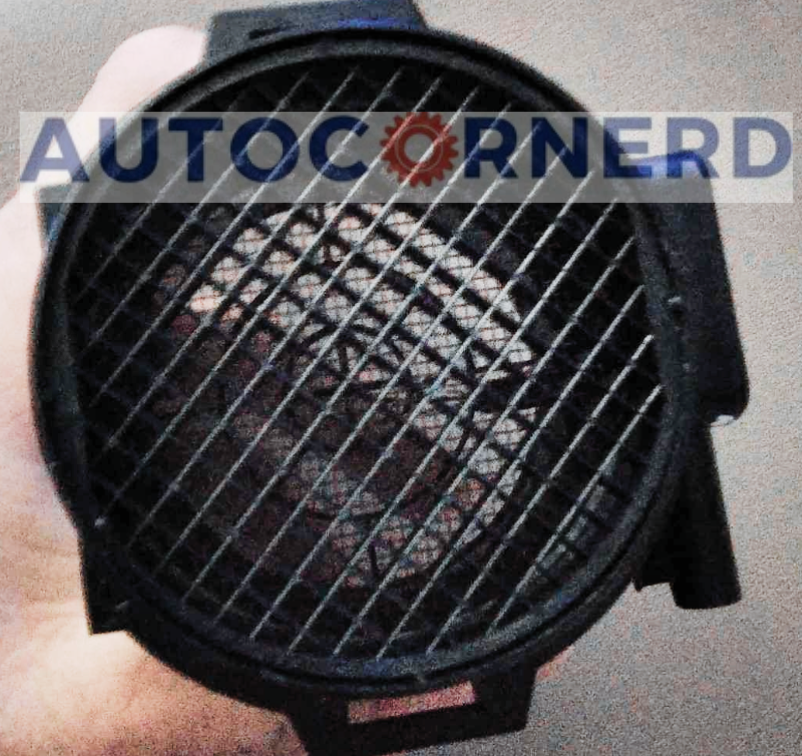
The mass airflow (MAF) sensor is an important engine component that measures how much air is flowing into the engine. It sends this airflow data to the engine control unit (ECU). The ECU uses this data to calculate and deliver the right amount of fuel for optimal performance.
So if the MAF sensor is dirty or faulty, the ECU gets inaccurate airflow readings. When this happens, you may experience rough idling, RPMs surge unexpectedly, or acceleration issues. The ECU is getting bad data so it struggles to add the right fuel amounts.
Older engines use a manifold absolute pressure (MAP) sensor instead of a MAF sensor. The MAP sensor measures vacuum pressure rather than airflow. Unfortunately, MAP sensors cannot be cleaned if they fail. You’ll need to replace them.
MAF sensors tend to be more accurate for fuel calculations. This is why newer engines have them. Some modern engines even use both MAF and MAP sensors for performance fine-tuning.
Check your owner’s manual to see which sensor(s) your engine uses. Replacing a defective MAF sensor often solves idling and acceleration problems related to bad sensor data.
How to test MAF sensor?
As the mass flow rate of air through the MAF sensor increases, voltage output also increases.
When you push the gas pedal, more air goes through the MAF sensor. This makes the voltage go up.
When the car is not moving much, the voltage should be less than 1.0V. When you make the car go faster, the voltage from the MAF sensor goes up from 1.0V to 1.7V.
How to fix?
You can try cleaning the MAF sensor if car’s engine exhibiting uncontrolled revs.
To clean the MAF sensor, follow these steps:
- Disconnect the negative terminal of the battery.
Remove the MAF sensor, it is located on the intake tube between the air filter box and the throttle body facing upwards. - Spray all of the little sensors you see inside of the MAF carefully with this MAF sensor cleaner. Avoid touching the wires of the MAF sensor. It will damage it.
- Reinstall and reconnect the battery terminal.
- Start the engine and let the ECU relearn idle for 15 minutes.
One user says this:
My Kia was revving on its own. So, after cleaning the MAF sensor, the issue was resolved.
3. Bad Engine Air Filter Hindering Proper Air Intake Causing Engine Misfires
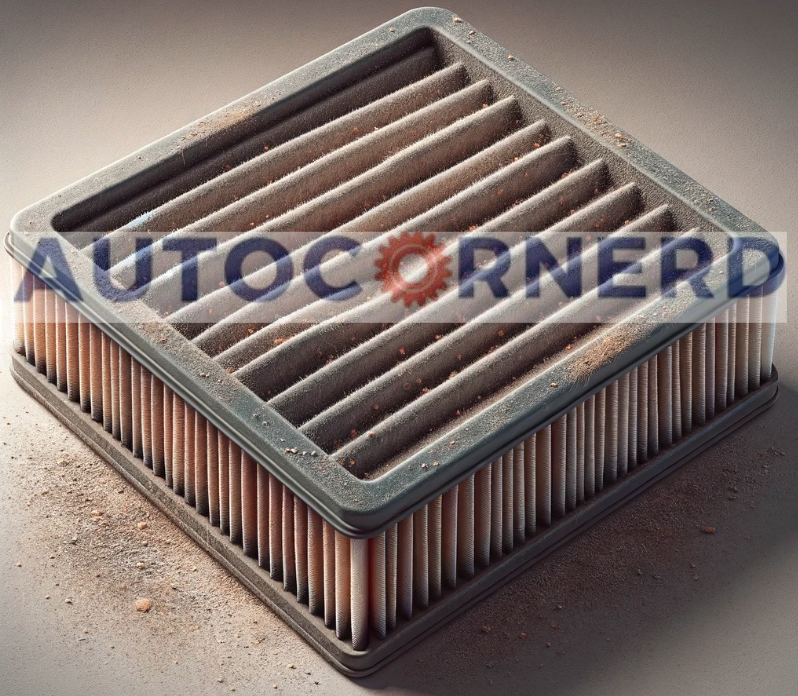
The air filter is a component of the engine that collects dust particles and other debris from the air before it is inhaled into the engine. A dirty air filter is often overlooked. It is essential to have it changed every 15,000 miles to maintain the engine’s performance.
In case of a faulty engine air filter, it may cause the engine to rev up spontaneously without your input. This may happen due to the accumulation of contaminants in the air filter as the airflow is disturbed due to the contaminants in the air filter.
How to inspect?
A bad air filter looks dark in color. The dirt in the air filter causes turbulence in the airflow. Due to disturbance in the airflow, the car may rev on its own.
How to fix?
Replacing your air filter is the only if it hasn’t been replaced for the last 15,000 miles. I have also created a car maintenance lookup for you. Be sure to check that out.
After every 500 miles, make sure to blow a compressed air through the engine air filter to keep it fresh.
4. Bad Idle Air Control Valve Leading to Surging Idle Speed
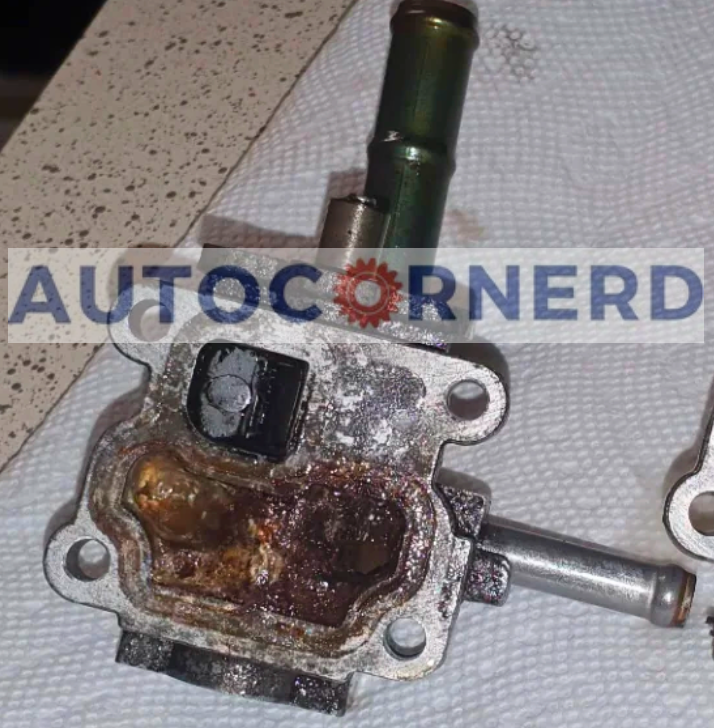
A faulty idle air control valve can also cause your car to rev unexpectedly. The idle air control valve (IACV) regulates the amount of air entering the engine at idle speeds in order to keep the RPM steady.
When the car is idling, the butterfly valve in the throttle body is almost closed. So, the idle air control valve allows air to bypass the throttle plate and enter the air intake manifold.
The following Youtube video is quite helpful to understand the working of idle air control valves.
The IACV is located on the intake side of the engine near the throttle body. When the IACV starts malfunctioning, it may cause the idle RPM to fluctuate up and down as air density and temperature change. Or, the IACV could get stuck open or closed, resulting in unstable idle speeds.
Most often, dirt and carbon deposits cause the IACV to get stuck. This prevents it from properly controlling the air and leads to unwanted engine revs.
IACV usually clogs with dirt and carbon deposits, due to which it is stuck and causes the car to rev on its own.
How to identify?
To identify a bad IACV, disconnect the IACV connector. If idle speed decreases and the engine dies out, it means the IACV valve is fine.
Another way to test the idle air control valve is to remove the air boot from the throttle body and cover the throttle body with something that will stop the airflow like your hand or tape.
During this process, your engine should be running. If the idle RPM does not decrease when you cover the throttle body, it means IACV is malfunctioning.
Moreover, when you shake the IACV in your hand, you should hear clicking inside of it. If there is no clicking, the valve might be stuck or broken
Another method to test a bad IACV is to check the resistance between the terminals of IACV and compare it with the specified resistance values.

From the above picture, B2 and B1 are terminals that receive a 12-V signal from the ECU. Set the multimeter to the ohm setting and measure the resistance between the terminals (B1 (or B2) to others).
Moreover, you should also check the wires of the harness connector of the IACV. Make sure the wires in the connector are not broken and the connector is firmly plugged into the IACV valve. If the wires are frayed or broken, you have to replace the harness connector.
5. Bad Throttle Body Restricting Smooth Airflow
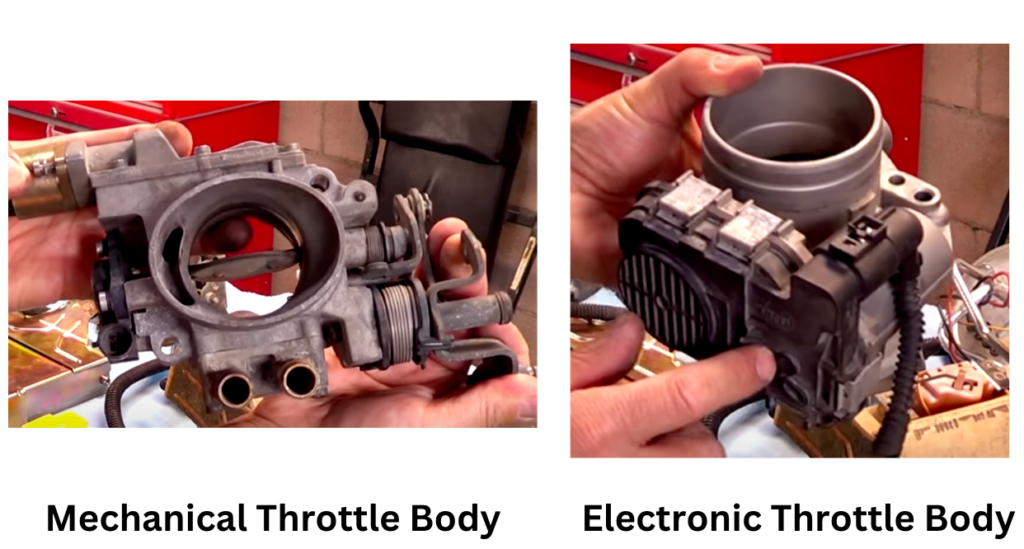
If your engine’s speed is jumping up and down without throttle input, there are the chances that throttle body is bad. Now, keep in mind that the throttle body can be both mechanically and electronically controlled.
The mechanical throttle body is driven by a throttle cable that links the accelerator pedal to the throttle plate.
If the throttle cable is too tight or sticking a little, it will not be able to have full control over the throttle plate. As a result, your car engine’s RPM will boggle without pushing a gas pedal.
The electronic throttle body is controlled by the ECU. The accelerator pedal sensor sends signals to the ECU so that it can compute how much the throttle valve should be opened.
You will see a port on which a harness connector is plugged into the throttle body. In that case, you have to test voltage signals at the harness connector of the throttle body and the resistance between the terminals of the throttle body actuator. In my guide on P1516 code I have explained the process of testing the throttle body.
If the throttle body passes electrical tests, you should check for any carbon deposits inside the throttle body. You can use this throttle body cleaner to clean the throttle body.
Make sure that the throttle plate of a throttle body is not binding when you try to move it with your finger. It should rotate freely under the action of a spring force.
Moreover, you have to perform the ECU relearn procedure for an electronic throttle body after cleaning. I have explained this in my guide on the P1516 code I linked above.
6. Bad Throttle Position Sensors Giving Inaccurate Throttle Readings
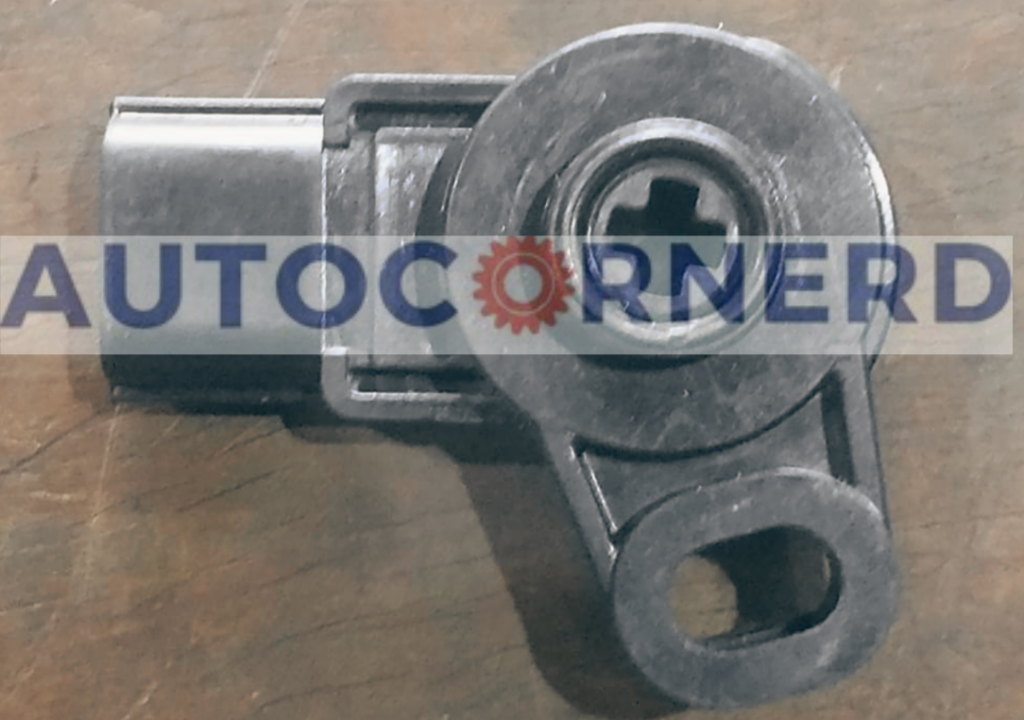
The throttle position sensor is an important part on your car engine. It sits on the throttle body. The sensor tells the car’s computer information about where the throttle plate is. So the computer knows if the throttle valve is open to the right amount.
The computer compares the readings from the accelerator pedal sensor and the throttle position sensor. It also looks at the mass airflow sensor. This helps it figure out if the throttle valve is opened to the calculated position or not.
If the throttle position sensor is broken, the computer can’t know where the throttle valve is. This means a bad throttle position sensor will make the engine rev up all by itself.
The following Youtube video will help you understand the working of throttle position sensors:
7. Faulty Coolant Temperature Sensor Providing Wrong Engine Temperature Data
The engine’s fuel and airflow are controlled by the electronic control unit (ECU). This computer uses information from sensors, including the coolant temperature sensor (ECT), to set the air-fuel mixture properly. When engines are cold, more fuel is added to help them warm up quickly.
The ECT sensor, found by the thermostat, shows the ECU the current engine temperature. Location varies, so check your model’s repair manual. If the ECT reading is incorrect, the computer will use the wrong fuel mix. Too much fuel when warm, causing high revving. Too little when cold, causing a stall.
With a bad ECT, upon startup, the engine gets extra fuel and revs high. The faulty sensor reports “cold” even as the engine warms.
The ECU keeps adding more fuel, unable to adjust properly. Finally, temperature reaches normal operating range. The high revs drop to normal as the computer switches to its warm engine tune.
How to test?
The best way to diagnose the coolant temperature sensor is to immerse it in the water, measure the resistance of the sensor at different temperatures and compare the readings to the specifications listed in the service manual.
Follow these steps to test the ECT sensor:
- Immerse the tip of the sensor in the water.
- Connect a digital ohmmeter to the two terminals of the sensor.
- Using a calibrated thermometer, compare the resistance of the sensor to the temperature of the water. Refer to the engine coolant sensor temperature vs. resistance
illustration. - Repeat the resistance at other temperatures by heating or cooling the water.
- If the sensor does not meet the specification shown in the temperature versus resistance chart, it must be replaced.
You can watch this video to learn more:
8. Low Coolant Level Causing Overheating & Triggering Protections Resulting in Surging Idle
The main job of the coolant is to keep the engine at the right temperature. When the coolant level drops too low, a few problems can happen.
First, the engine temperature sensor won’t be fully covered by liquid. This sensor tells the engine computer the current temperature. Without accurate readings, the computer won’t know the real temperature.
Second, low coolant levels reduce the cooling ability. Hot spots develop in the engine which messes with combustion.
Finally, the contaminated old coolant won’t transfer heat properly. You’ll notice the color change from green/blue to brown/rusty. It’s time to drain the old coolant and refill it with fresh one. That will help avoid overheating issues.
How to fix?
To flush the coolant system, keep the radiator valve open and the drain pan in place, and then run water through the radiator. The drain valve of a radiator is usually located at the bottom.
Flush the coolant system until you see the transparent water flowing out of the drain valve. If your coolant color is fine, you need to check whether the coolant level is low or not.
In my guide on P0128 error code, I have explained a detailed process of adding a coolant to the engine. You must read it.
9. Damaged Spark Plugs Hindering Proper Combustion Causing Misfires
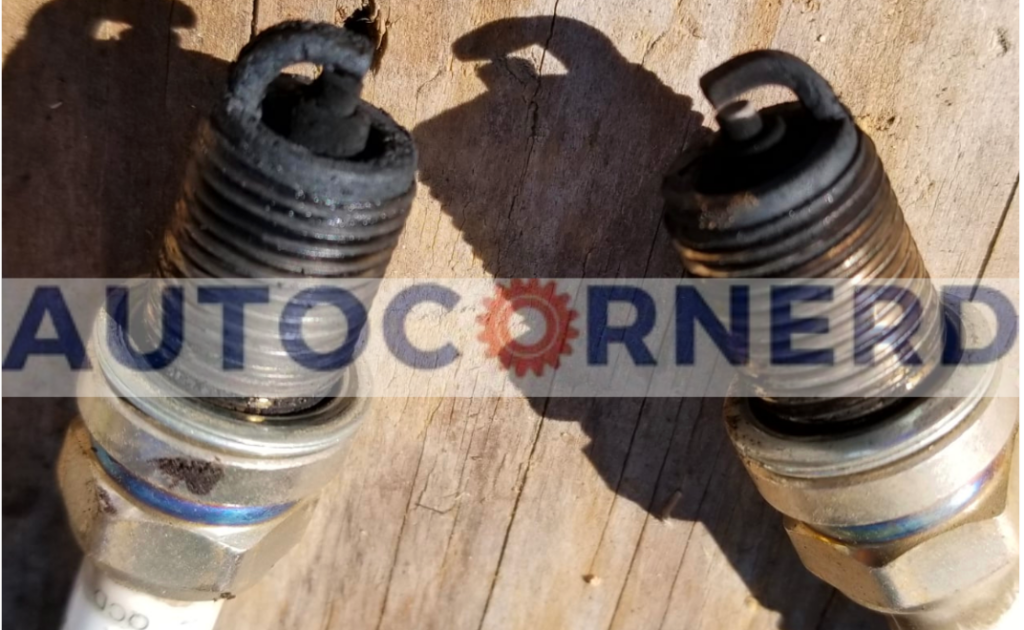
A damaged spark plug can cause your car to rev itself on its own. Spark plugs can be fouled with the deposits of fuel, ash, oil and corrosion, and can cause engine misfire. I have found this amazing guide (bad spark plug signs PDF) that includes pictures of all possible damages with the spark plug.
The ignition coil generates a high-voltage pulse of electricity. This pulse is then sent to the spark plugs which ignite the air-fuel mixture in your engine.
A bad spark plug fails to generate and misses the firing point, resulting in unintended high revs in car.
When an engine misfires, the air-fuel mixture is not burnt uniformly. As a result, sudden combustion events take place in the engine cylinders at the wrong time. This causes a sudden increase and decrease in the engine RPMs.
How to test?
You can test spark plugs by using a multimeter and setting it to resistance measurement. You should get a reading between 4,000 to 8,000 ohms on the center electrode.
In addition, you should look for a short between the ground and center electrode of the spark plug. No short means a good spark plug.
You can watch following youtube video to learn more:
How to fix?
You can try cleaning the spark plugs using the wire brush and spark plug cleaner to carefully remove any carbon deposits or contaminants from the electrode. Ensure not to damage the electrode or insulator in the process.
First, use compressed air to clean off any dirt and debris. Then, keep the spark plug soaked in the brake cleaner till all the gunk on the spark plug is washed away. If the spark plug still doesn’t ignite properly, you need to replace it.
10. Damaged Fuel Injector Restricting Proper Fuel Delivery
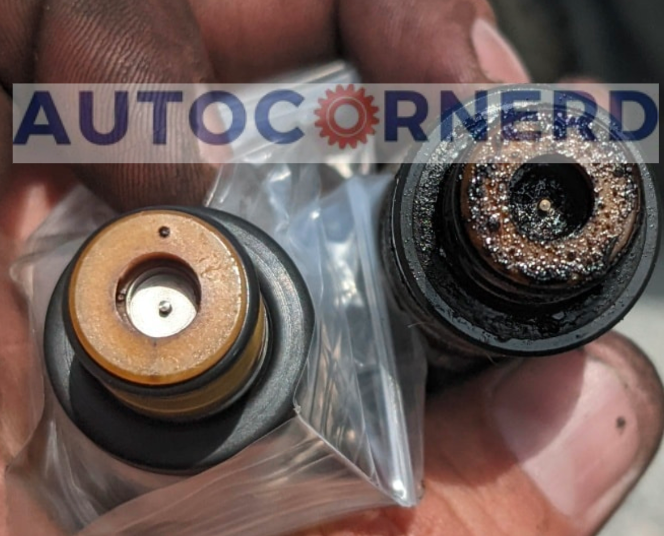
When the fuel injector is damaged or clogged, it no longer injects the right amount of fuel in the right direction into the engine. Thus causes the engine to rev on its own.
The fuel injectors get their signals from the ECU which tells them when to open or close. When fuel injectors become bad, they fail to inject atomized fuel at the right time.
A fuel injector can be clogged with carbon deposits. Moreover, a fuel injector can also be stuck open, due to which it fails to inject the fuel in an atomized form.
How to test?
There are different tests to check the fuel injectors. First, we have to check the O-rings on the top and bottom of the fuel injector as a leaky fuel injector will fail to deliver sufficient fuel to the engine cylinder and could cause a misfire.
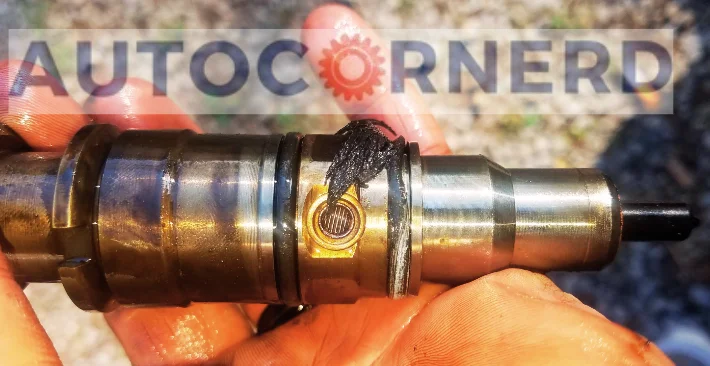
Next, we have to perform an electrical test on each fuel injector to see if it’s clicking or not. After that, a mechanical test is done on the fuel injectors to observe whether they are injecting fuel at a right angle.
To learn all that, you can read my guide on car won’t start after replacing the fuel injectors.
11. Bad Fuel Pressure Regulator Failing to Maintain Constant Fuel Pressure
A fuel pressure regulator is responsible for maintaining fuel pressure inside a fuel rail so that fuel injectors inject fuel at a certain pressure.
A bad fuel pressure regulator will also cause an engine misfire as it allows fuel to enter the air intake manifold and damage the throttle body. You can read my guide on symptoms of bad fuel pressure regulator to learn more.
If you have a Gasoline Direct Injection engine, it will have a fuel pressure sensor instead of a fuel pressure regulator. This fuel pressure sensor sends signals to the ECU to control the solenoid valve of a camshaft-driven GDI fuel pump.
12. Stuck EGR Valve Affecting Exhaust Gas Recirculation
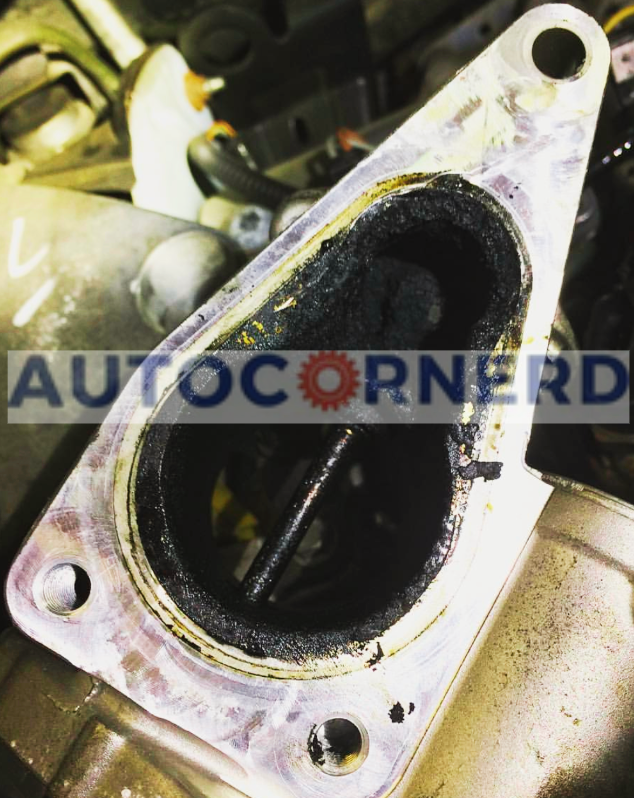
The EGR valve (exhaust gas recirculation) is a device that allows part of the exhaust gases to recirculate back into the intake manifold to reduce the NOx emissions by re-burning exhaust gases and reducing combustion temperature.
If the EGR valve becomes stuck, the car will rev up without any input from the driver.
The EGR valve is controlled by the ECU. EGR valve is only opened when the engine is just started and is at idle so that heat of exhaust gases can be utilized for efficient combustion and to warm up the engine.
As more torque or power is required from the engine, the EGR valve is closed. This is because, when the EGR valve opens, exhaust gases take up the space of fresh air.
So, less oxygen is present in the air-fuel mixture. When high power is required, the EGR valve is closed to ensure as much oxygen enters the cylinder.
If EGR is stuck open, the vehicle’s air-fuel ratio will be disrupted. This will especially happen when you’re trying to accelerate your vehicle, but your engine’s RPM starts fluctuating.
How to test?
If your EGR valve is malfunctioning, the OBDII scan tool will display P0400, P0401 or P0402 error codes.
Now, remove the EGR valve and perform a visual inspection to check for any cracks or holes in the housing. A cracked or damaged EGR valve will need to be replaced.
To check if the EGR valve is working correctly, we will now use a hand-operated vacuum pump.
If the EGR valve can hold a vacuum, it indicates that the valve is functioning properly. However, if the vacuum pressure drops off after a while, it suggests a faulty EGR valve that needs to be replaced.
13. Bad Cam Phaser Hindering Proper Valve Timing
If your car has a VVT (Variable Valve Timing) system, it also has a cam phaser. The cam phaser adjusts valve timing at high RPMs based on input from the ECU (engine control unit). When the cam phaser malfunctions, you may notice the engine is exhibiting uncontrolled revs.
The cam phaser opens and closes the valves in sync with the camshaft. When it fails, the valve timing falls out of sync with engine speed, leading to unstable idle speed.
A few common causes lead to cam phaser problems. Debris buildup inside the phaser mechanism can restrict its movement and throw off timing. The locking pin, which keeps it in the correct position, can shear off. Timing belt wear and tear can jump the timing.
Proper maintenance goes a long way to avoiding cam phaser issues. Regular oil changes keep contaminants from damaging the variable valve system.
A damaged timing belt/chain could also be the cause of incorrect valve timings, which will result in the engine misfire and changing of engine’s RPMs without any control.
Final Thoughts
In summary, a car that suddenly speeds up its engine can be scary and annoying. Finding what’s causing it takes step-by-step troubleshooting, but that’s the key to fixing it.
There are a lot of possible reasons, like vacuum leaks, bad sensors, problems with the spark plugs firing, fuel delivery issues, and airflow problems.
You have to inspect everything closely, test parts, and eliminate possible causes one by one. With all the possible causes explained above, you can figure out why the engine is revving up and get it fixed.
Some First Hand Experiences Shared By Users In Different Communities
Our team conducted research across various online communities, forums, and subreddits to gather user comments and opinions on “car revving high and low on its own”.
User 1 says:
My ’06 Camry had this odd revving issue. I’m no expert, but after some Googling, I suspected the idle control valve. Took it to my mechanic, and sure enough, that was it. A replacement part and it was as good as new.
User 2 says:
This happened to my Altima. It revved up when I started it. First thought it was a cold engine issue, but nope. It was the spark plugs. Replaced them, and it fixed the issue.
User 3 says:
Hey all, I had this issue with my ’10 Civic where it started revving randomly. At first, I thought it was a fluke, but it kept happening. Turned out, the throttle body was dirty. A good cleaning solved it.
User 4 says:
Had a freaky moment when my ’09 Acura TL started revving on its own. Did some digging and discovered the issue was with the air intake hose. It had a crack, causing air leakage. Replaced it, and the problem was gone.
User 5 says:
Encountered a revving issue with my Volvo. It was the mass airflow sensor getting dirty. Cleaned it, and the revving stopped.
How did you fix issue of your car revving on its own? Please vote.
[yop_poll id=”15″]
